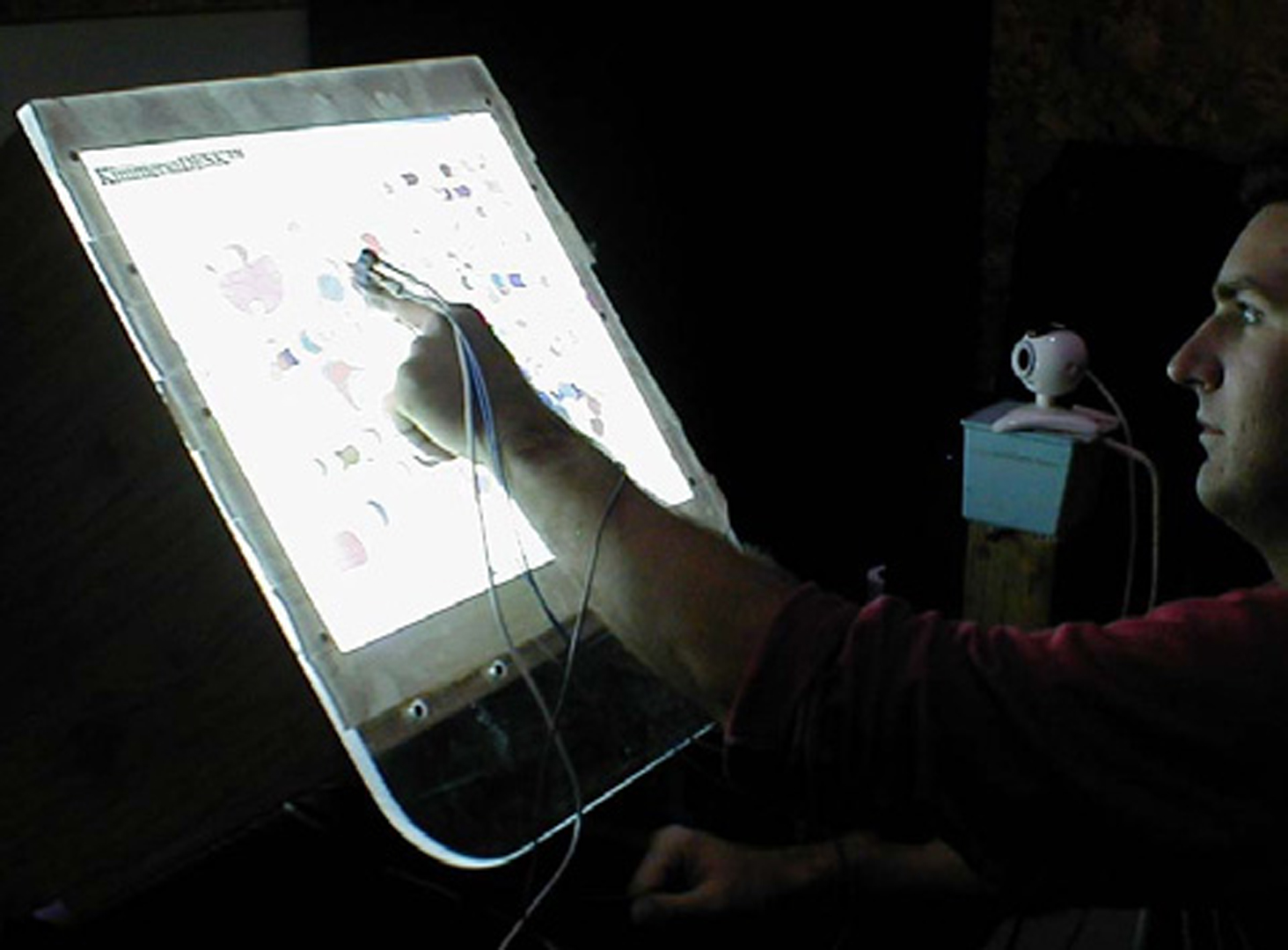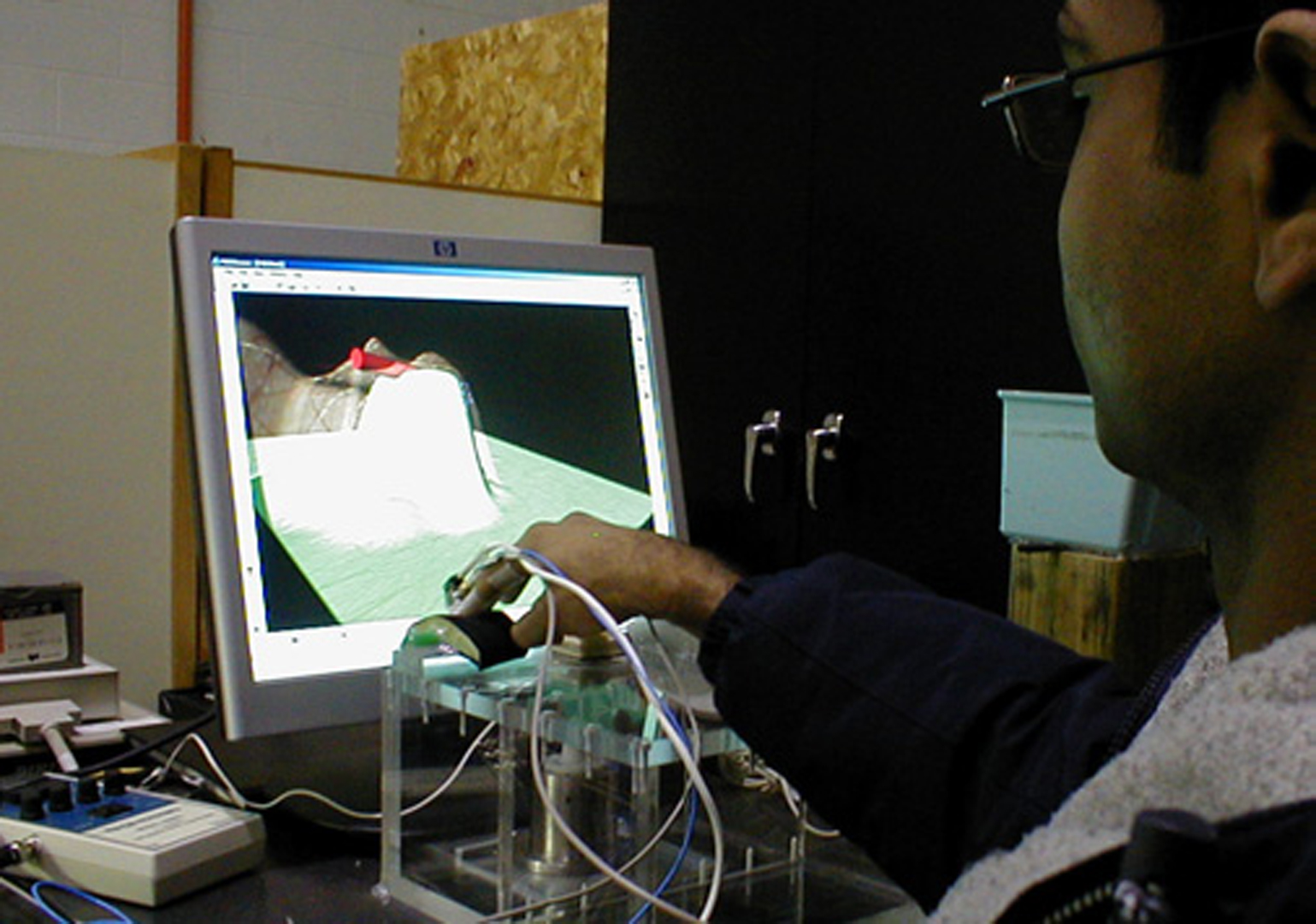“Fingertip Digitizer: Applying Haptics and Biomechanics to Tactile Input Technology” by Kim and Kesavadas
Conference:
- SIGGRAPH 2006
-
More from SIGGRAPH 2006:


Type(s):
Entry Number: 10
Title:
- Fingertip Digitizer: Applying Haptics and Biomechanics to Tactile Input Technology
Presenter(s):
Description:
Direct finger touch interface in most human-computer interface require smart panels, such as touch screens or pressure pads. With these interfaces, however, a user’s tactile activity is limited to few modalities, such as pressing or dragging. Many common tactile activities used in real life such as rubbing, palpating, scratching etc cannot be captured by such devices.
We present the Fingertip Digitizer, a novel fingertip-mounted haptic sensory digitizer. This device captures physical phenomena at the fingertip during dynamic tactile activities. Complex biomechanical characteristics at the finger, such as viscoelastic tissue behavior and joint impedance, are modeled for the applications of delicate tactile activities, such as art, medicine, and industry.
Other Information:
References
FUNG, Y. C. 1993. Biomechanics: Mechanical properties of living tissues. New York: Springer-Verlag.
HAJIAN, A. Z., AND HOWE, R. D. 1997. Identification of the mechanical impedance at the human finger tip. ASME Journal of Biomechanical Engineering, 119(1), 109-114.
KIM, Y. -S. AND KESAVADAS, T. 2006. Material property recognition by active tapping for fingertip digitizing. Presented at Haptics Symposium 2006: Haptic Interfaces for Virtual Environment and Teleoperator Systems, 133-139. Alexandria, VA.
LEDERMAN, S. J., KLATZKY, R. L., AND PAWLUK, D. T. 1992. Lessons from the study of biological touch for robotic haptic sensing. In H. R. Nicholls (Ed.), Advanced tactile sensing for robotics. New Jersey: World Scientific.





